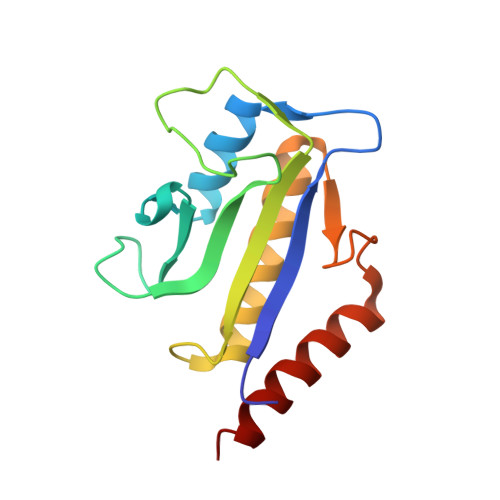A shape-based 3-D scaffold hopping method and its application to a bacterial protein-protein interaction
Rush, T.S., Grant, J.A., Mosyak, L., Nicholls, A.(2005) J Med Chem 48: 1489-1495
- PubMed: 15743191
- DOI: https://doi.org/10.1021/jm040163o
- Primary Citation of Related Structures:
1Y2F, 1Y2G - PubMed Abstract:
In this paper, we describe the first prospective application of the shape-comparison program ROCS (Rapid Overlay of Chemical Structures) to find new scaffolds for small molecule inhibitors of the ZipA-FtsZ protein-protein interaction, a proposed antibacterial target. The shape comparisons are made relative to the crystallographically determined, bioactive conformation of a high-throughput screening (HTS) hit. The use of ROCS led to the identification of a set of novel, weakly binding inhibitors with scaffolds presenting synthetic opportunities to further optimize biological affinity and lacking development issues associated with the HTS lead. These ROCS-identified scaffolds would have been missed using other structural similarity approaches such as ISIS 2D fingerprints. X-ray crystallographic analysis of one of the new inhibitors bound to ZipA reveals that the shape comparison approach very accurately predicted the binding mode. These experimental results validate this use of ROCS for chemotype switching or "lead hopping" and suggest that it is of general interest for lead identification in drug discovery endeavors.
Organizational Affiliation:
Department of Chemical & Screening Sciences, Wyeth Research, 87 Cambridge Park Drive, Cambridge, MA 02140, USA. trush@wyeth.com















